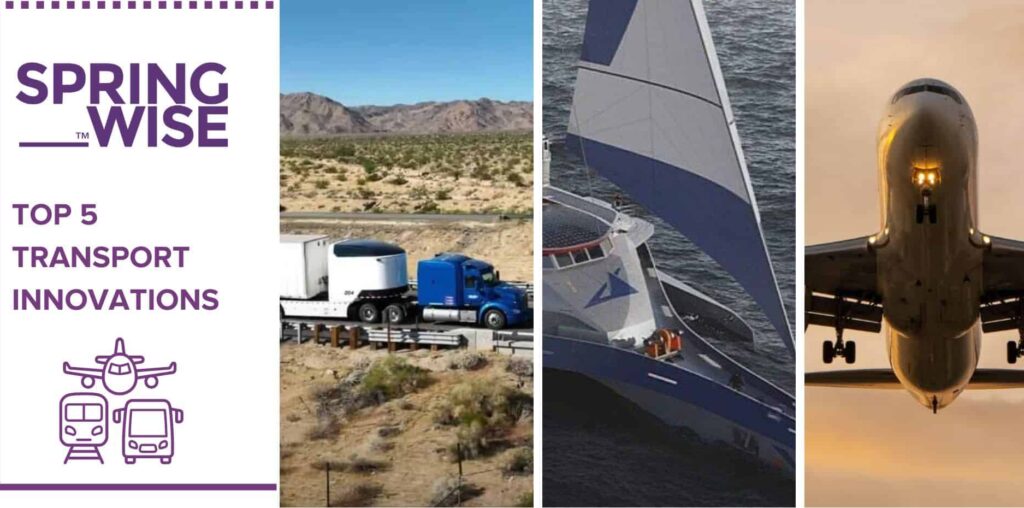Transport links play an important role in economic development, yet transportation itself comes with a carbon footprint. To raise awareness of the importance of safe, affordable, accessible, and sustainable transport systems, the UN has designated 26th November as World Sustainable Transport Day. To mark the occasion, we’ve delved into our innovation library to highlight some of the exciting solutions decarbonising transport.
What is the climate impact of transportation?
Overall, the transportation sector accounts for around one-quarter of the world’s global greenhouse gas emissions, although there is significant variation in the share of emissions from transport in individual countries. In high-income countries, transport can account for up to 30 per cent of national emissions, whereas that figure is less than three per cent in some of the least-developed countries. This reflects the fact that better-off people tend to travel more.
Where are the emissions hot spots within the transport sector?
Within the transportation sector, cars and vans are the largest polluters, contributing 48 per cent of emissions. Heavy and medium freight vehicles come next, with 16 per cent and 9 per cent of emissions respectively. Aviation, both domestic and international, accounts for 11 per cent, while international shipping accounts for 10 per cent of emissions. At the lower end, buses account for 6 per cent of emissions while rail accounts for just 1 per cent.
When it comes to innovation, however, it’s not as simple as ‘keeping score’ of emissions contributions. Electric cars are becoming well established, accounting for nearly 16 per cent of global passenger car sales in 2023, up from just 0.4 per cent in 2014. Here innovation is focused on boosting range and optimising charging infrastructure. With heavy road freight, shipping, and aviation, however, the path to decarbonisation is less clear and there is more call for disruptive innovation.
How are innovators tackling transport emissions?
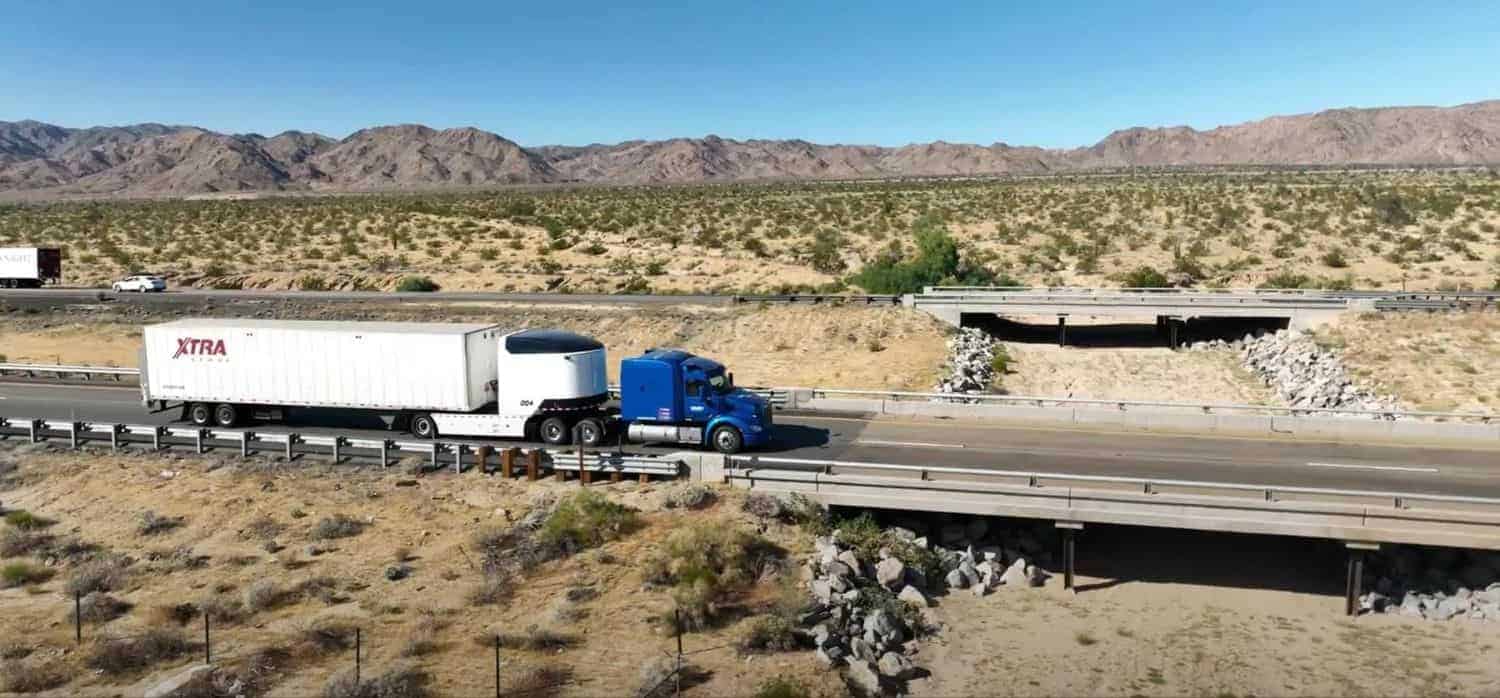
Photo source Revoy
Transforming trucking with an easy electric add-on
Trucks and vans are responsible for 65 per cent of emissions from freight. The long-term solution is to convert all trucks to zero-emission power – whether through batteries or fuel cells – but doing so is expensive and disruptive in the short term. Now, however, electric propulsion experts at Revoy are offering an interim solution. Instead of changing vehicles or requiring expensive retrofits, the startup provides an add-on for existing trucks that enables drivers and fleet owners to experience some of the benefits of EVs at a reduced cost and with minimal disruption to a company’s fleet. Users attach the trailer kingpin to the Revoy unit’s fifth wheel, before connecting the Revoy’s kingpin to a tractor’s fifth wheel. This quickly converts the vehicle into a hybrid. Instead of waiting to recharge the Revoy, as is normally the case with EVs, truck drivers simply swap out the unit for a new, pre-charged Revoy at conveniently located sites along key trucking routes across the US. Read more
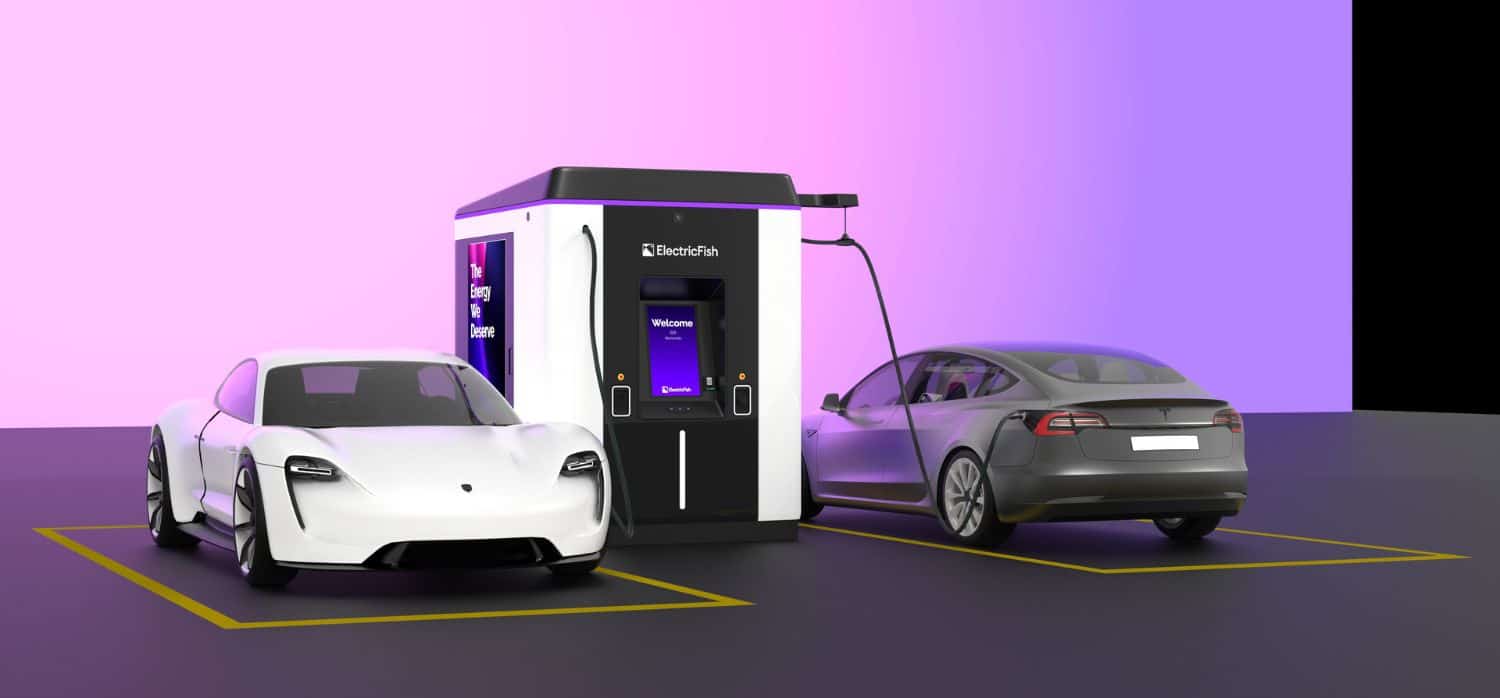
Photo source ElectricFish
EV chargers that don’t strain the power grid
To accommodate the 26 million EVs that are set to be on US roads by 2030, the country will need over ten times as many public chargers as there are today. That could prove a difficult task, given that traditional energy distribution and charging infrastructure upgrades can be slow and expensive. ElectricFish offers battery-integrated EV chargers that deliver high-speed charging without costly grid upgrades, making it easier for fleet operators and businesses to electrify their transportation systems. Instead of pulling power from the grid whenever a car plugs in, ElectricFish’s device uses a large battery. The battery charges when excess renewable energy is available, detaching the EV charging load from the grid. Read more
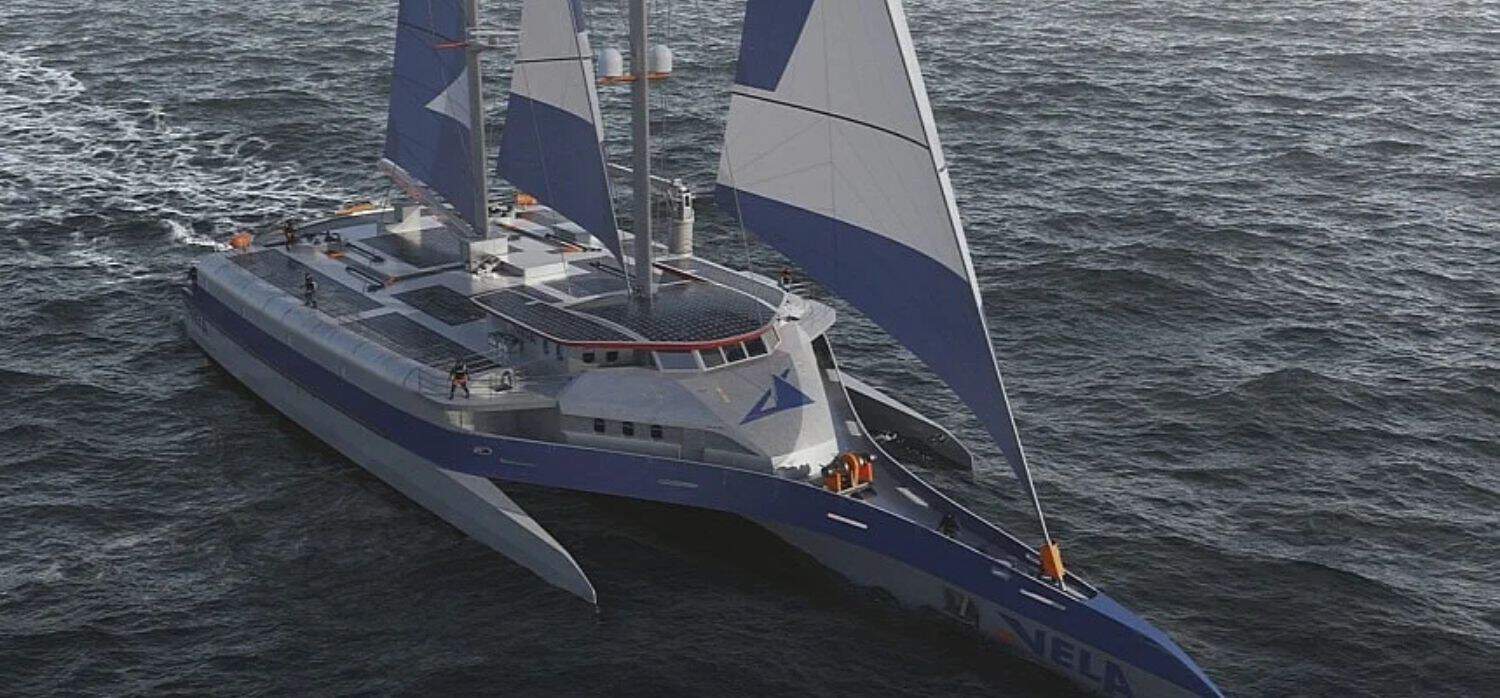
Photo source Vela
Modern wind power for maritime cargo
Mile for mile, ocean shipping is much less emissions-intensive than air or ground freight. However, the huge scale of the industry means that it’s still a significant contributor to global greenhouse gases, generating around three per cent of total CO2 emissions. Working to reduce this is French company Vela, which has developed 100 per cent wind-powered maritime transport. Vela is designing and building the world’s largest sailing cargo trimarans. The vessels, nicknamed L’avions des Mers (‘The Sea Planes’), will offer wind-powered transatlantic crossings in less than 15 days, allowing shippers to achieve even faster timelines and at a fraction of the carbon cost. Each ship will carry the equivalent of 51 containers of cargo, most of which will be stored on the upper deck, streamlining loading and unloading operations. The vessels will also store goods on pallets instead of containers, minimising weight and keeping costs low for shippers. Read more

Photo source © Kodica from Getty Images via Canva.com
Flying green with net-zero aviation fuels
The International Air Transport Association estimates that Sustainable Aviation Fuel (SAF) could contribute up to 65 per cent of the reduction in emissions needed for the aviation sector to reach net zero by 2050. However, this will require a massive increase in SAF production in order to meet demand. Climate tech company Aether Fuels has developed technology to enable the conversion of waste carbon feedstocks – including industrial flue gas, captured CO2, solid waste and biomass, and biogas – into jet fuel and other liquid hydrocarbons. Designed to deliver feedstock flexibility, Aether’s process could overcome the supply constraints faced by other sustainable aviation fuel (SAF) production processes. Read more
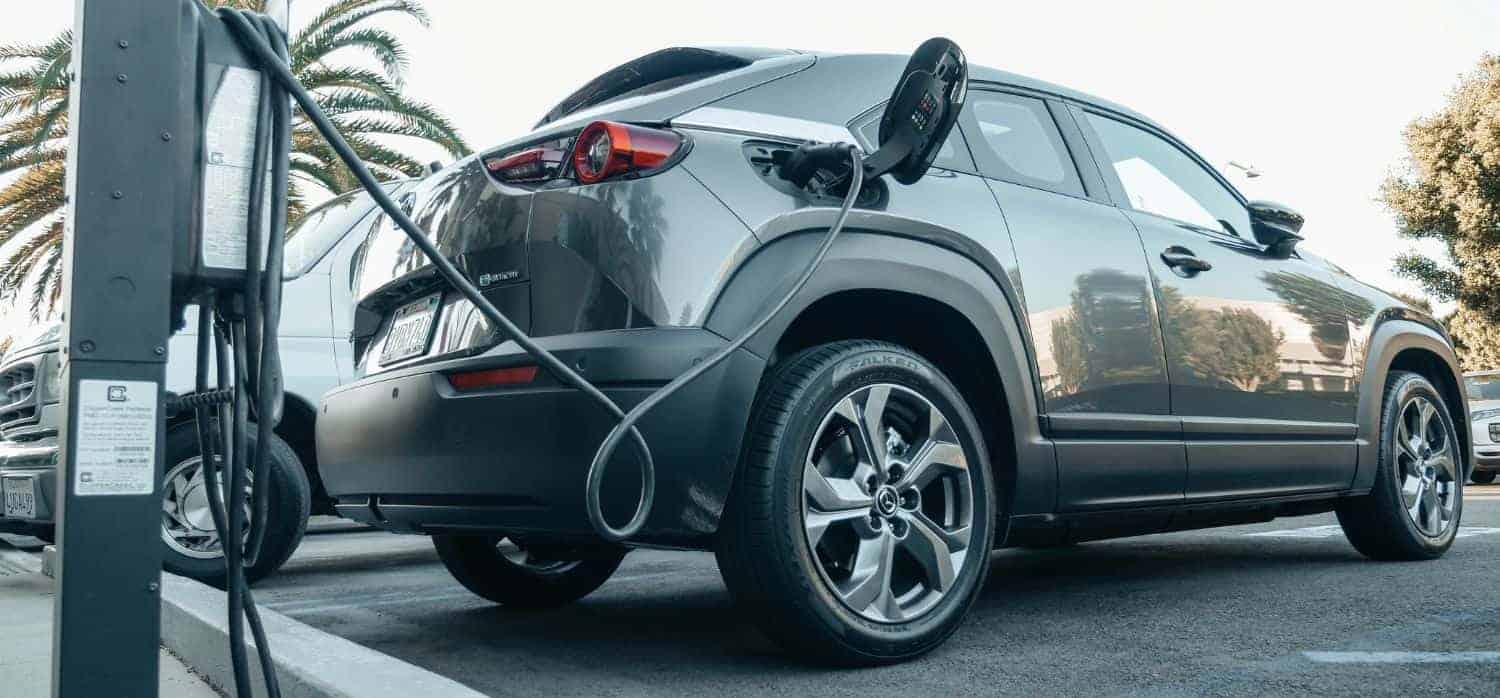
Photo source © Kindel Media from Pexels via Canva.com
Magnets boost EV battery performance
According to the International Energy Agency, electric car sales could reach 17 million in 2024, accounting for one in five cars sold globally. Despite this progress, time-consuming charging is one of the hurdles preventing even faster mass market adoption, and global innovators are working to overcome this barrier. One of these is University College London (UCL) spin-off Gaussion, which has turned towards magnets as a novel solution. Gaussion has dramatically improved EV battery performance, enabling rapid charging on commercially available battery cells. By applying an external magnetic field during charge and discharge cycles, the team directs ions within the battery cells. This innovative approach reduces cell degradation, extends battery life, and has successfully demonstrated 10-minute charging capabilities. Read more
Compiled by: Matt Hempstead
